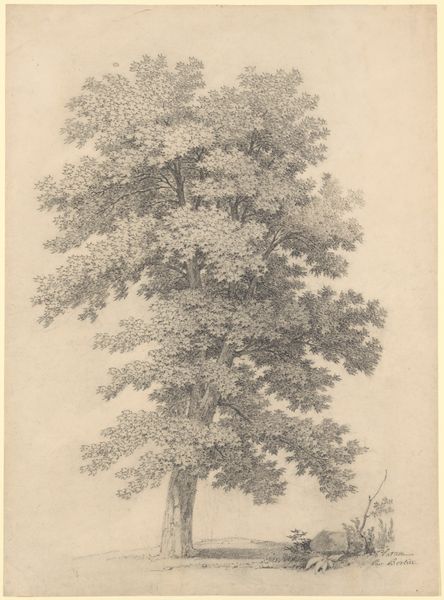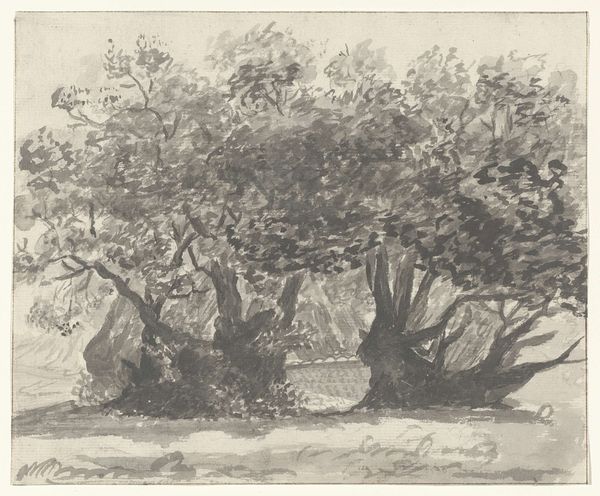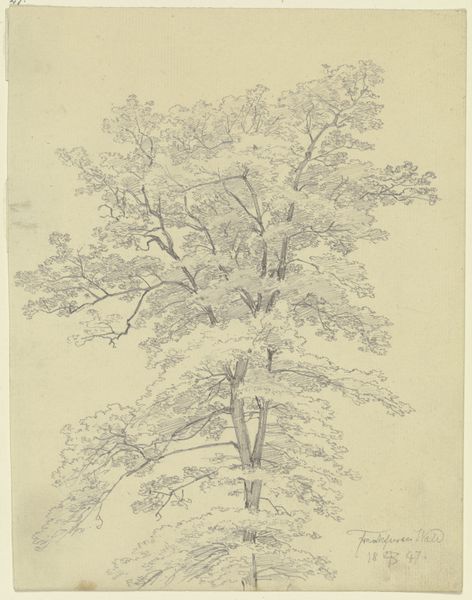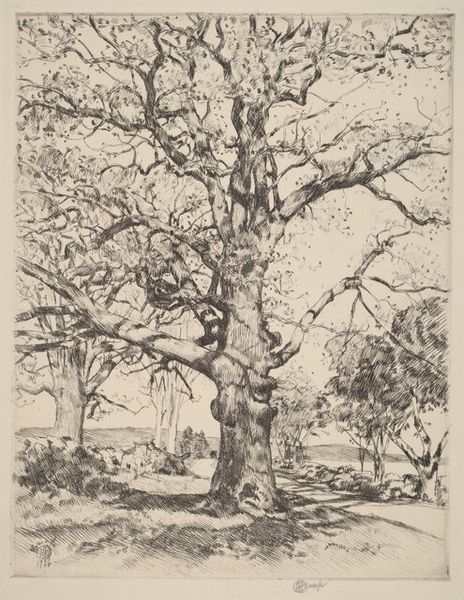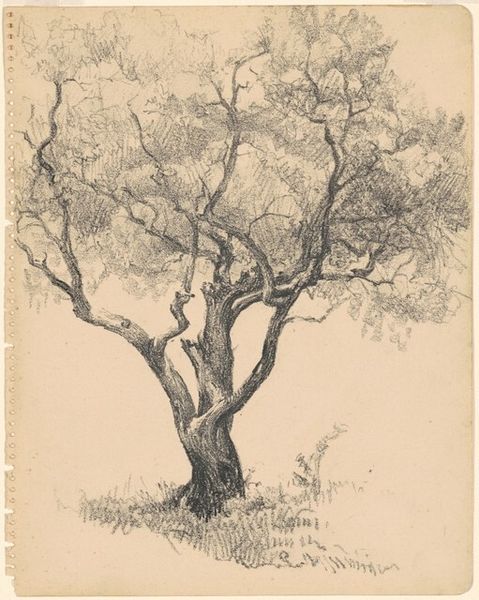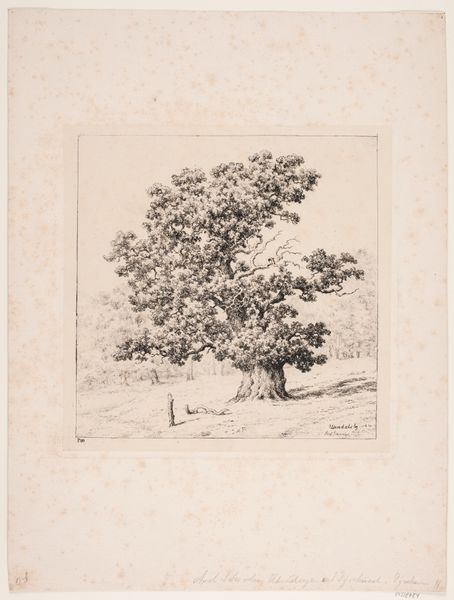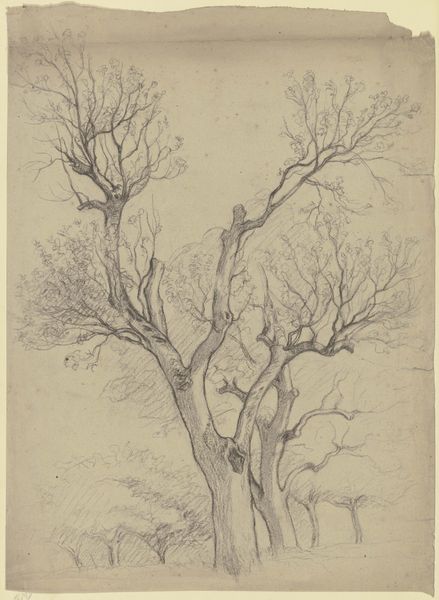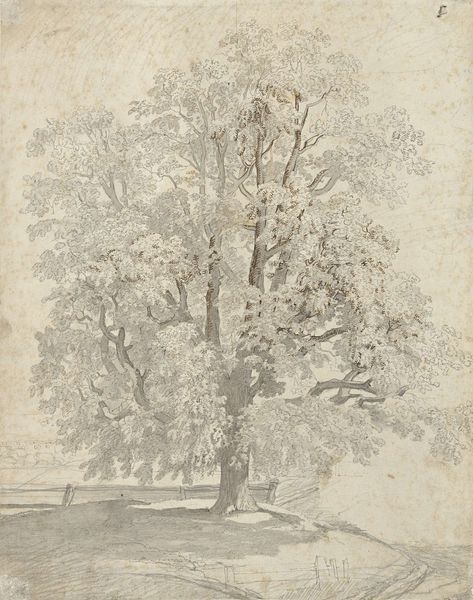
drawing, pencil
#
drawing
#
landscape
#
romanticism
#
pencil
#
botanical drawing
#
realism
Copyright: Public Domain: Artvee
Curator: We're looking at John Constable's "A Great Oak Tree," created around 1801 using pencil. What are your initial thoughts? Editor: The immediate impression is of towering strength, wouldn’t you agree? It fills the entire visual plane. The stark lines against the paper are so… assertive. Curator: Indeed. Consider the social climate around 1801; England's agrarian society was facing significant upheaval with early industrialization. Pencil sketches like this were crucial in Constable’s artistic process; a method for understanding the rapidly changing landscape. He produced countless studies, almost cataloguing the elements that constituted ‘England’. Editor: It’s fascinating how Constable uses such simple materials to convey a sense of depth and complexity. Look at the branching structure, the textures! The contrast of light and shadow—almost Baroque in its intensity. The tree's presence is magnificent in its formal execution. Curator: The labor behind these studies should be appreciated too. Constable wasn't just recording, he was interacting physically with his environment, almost wresting its image onto paper. Think about the social value placed on ‘nature’ at the turn of the nineteenth century, an ideal of untouched wilderness carefully constructed for an emerging leisure class. Editor: True, and he certainly makes artful choices. The rhythmic play of the boughs; that knotty, textured bark—it is visually captivating! I almost feel I could study this image like a formalist treatise of art itself: a self-contained exploration of line, form, texture, and value within a delimited plane. Curator: Right. We often interpret works like these through lenses that obscure the historical reality of production; forgetting the materiality, the costs, and labor embedded in each piece of art. These drawings offered Constable artistic freedom outside the expectations of studio commissions, or the formal constraints of Academic landscape painting. Editor: Thank you. Looking closer I see how, for Constable, the tree transcends simple depiction, reaching into something deeply metaphorical—perhaps, as a study in composition, or for its symbolic value too. Curator: Perhaps we should also reflect on the political weight that images of trees have historically held—from symbols of territorial claim to representations of community resilience and power. I have so much more I want to say. Editor: Absolutely. It's certainly provided some novel formal and art historical ideas for me to think about.
Comments
No comments
Be the first to comment and join the conversation on the ultimate creative platform.



